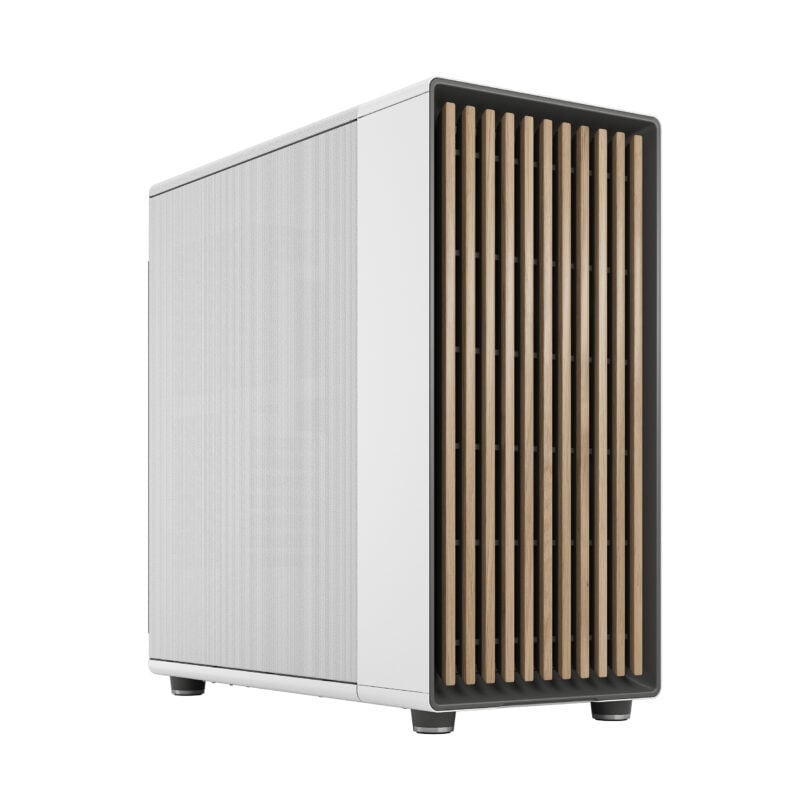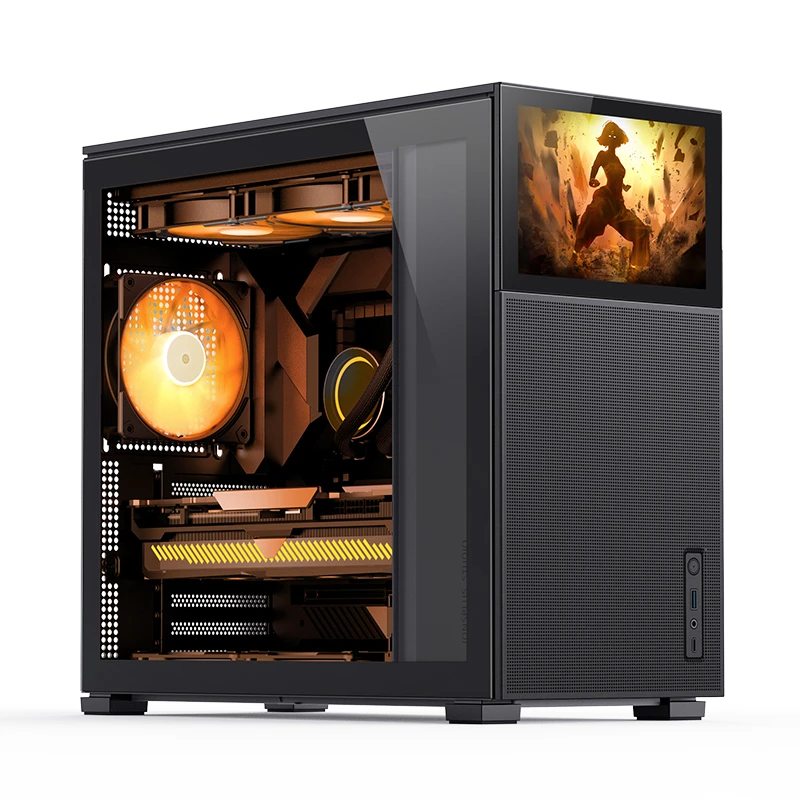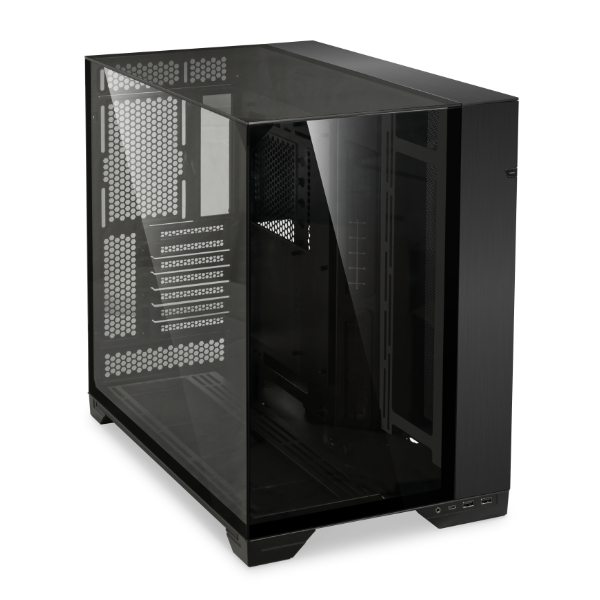Computer Design: Video Cards Now Used as Innovative Computer Cases
Picture this: instead of having your computer housed in a traditional metal or plastic case, why not have it nestled inside a powerful video card? So, how does this work? Well, let’s take a closer look at the process.
First, you will need to select a high-end videocard that has a large enough space to accommodate all the components of a computer. This can include the motherboard, RAM, CPU, and storage devices. You’ll also need to ensure that the videocard has the necessary ports for connecting peripherals such as a monitor, keyboard, and mouse.
Once you have selected the right videocard, the next step is to carefully disassemble it. This may require some technical knowledge and skill, and it’s important to handle the delicate components with care.
Now comes the fun part – building your computer inside the videocard! Start by fitting the motherboard into the designated space. Then, install the CPU, RAM, and any other necessary components. You may need to get creative with how you arrange these parts, but the end result will be a compact and powerful computer.
One of the major benefits of using a videocard as a computer enclosure is its cooling capabilities. Most high-end videocards come with advanced cooling systems to prevent overheating, which is crucial for the optimal performance of your computer. Additionally, this unique setup allows for better air circulation and heat dissipation, ensuring your computer runs smoothly and efficiently.
The Airflow Revolution: No More Oven-Like Rigs
Gone are the days of suffocating components in glass boxes. At Computex 2023, thermal performance finally trumped RGB overload, with case makers prioritizing innovative cooling solutions. Gamers Nexus’ deep-dive testing revealed staggering improvements: cases like the Fractal North XL dropped CPU temps by 7°C vs. last-gen models, while vertical airflow designs slashed GPU heat by 12°C. We break down the engineering breakthroughs rewriting case design rules:
Top 5 Cases Dominating 2023 Builds
1. Fractal North XL: Scandinavian Minimalism Goes Big
Dimensions: 240 x 520 x 500mm | Material: Steel/oak mesh
Key Innovation: Angled front mesh + dual 200mm intake fans
Thermal Results: 3°C cooler than standard North (GN Labs)
Why Pros Love It: Fits 420mm rads and E-ATX boards while maintaining 70L compactness
Best For: High-end workstations needing whisper-quiet cooling
2. Lian Li Vision: The Ultimate Showcase
Dimensions: 235 x 485 x 458mm | Material: 4x tempered glass
Gamechanger: Corner-free glass with magnetic joining
Cooling Masterstroke: Bottom-to-top airflow path (3x 140mm reverse fans included)
Real-World Perf: 5°C GPU advantage over O11 Dynamic in GN’s torture test
Target User: Custom loop builders & hardware flexers
3. Jonsbo D41 Mesh: Budget Airflow King
Dimensions: 205 x 440 x 392mm | Price: $130
Shock Value: Beats $200+ cases in GN’s noise-normalized thermal tests
Secret Weapon: Perforated steel panels (87% open area) + 280mm top mount support
Dark Horse: Fits 4080 GPUs under 355mm
3 Design Trends Rewiring the Industry
Death of the Solid Front Panel: Cases with >60% mesh fronts now dominate GN’s “Best Airflow” list
Vertical GPU Standardization: 92% of new cases support vertical mounting natively
Reverse Layout Boom: Asus’ GT302 ARES flips the motherboard for direct GPU airflow
Thermal Deep Dive: GN Labs’ Brutal Testing
Using standardized test benches (i9-13900K + RTX 4090), Gamers Nexus exposed critical findings:
Mesh Matters: Cases with dual mesh layers (front+side) reduced hotspot temps by 11°C
Size Isn’t Everything: Compact cases like SSUPD Meshroom S outperformed 6 full-towers
The 140mm Fan Sweet Spot: Units with 140mm intakes averaged 6dBA quieter than 120mm equivalents
The Verdict: What to Buy Now
| Use Case | GS’s Top Pick | Key Advantage |
|---|---|---|
| High-End Airflow | Fractal North XL | Wood-metal hybrid cooling |
| Showcase Build | Lian Li Vision | Uninterrupted 360° views |
| Budget Builder | Jonsbo D41 Mesh | $79 thermal beast |
| SFF Enthusiast | Asus Prime AP201 | 33L fits 4090 + 360mm rad |
“Forget RGB – 2023 is the year cooling became sexy.”
— Steve Burke, Gamers Nexus
Future Watch: What’s Coming Next
Liquid Cooling Integration: Montech’s Sky Two includes pre-routed distro plates
AI-Optimized Fans: Phanteks’ prototype uses sensors to auto-adjust flow paths
Material Shift: Aluminum cases projected to drop 25% in price by 2024
Explore GN’s full thermal test data:
Gamers Nexus Computex Case Roundup







































ПОДПИСЫВАЙСЯ! В канале:
• Только лицензированные LIVE-казино
• Рабочие зеркала 24/7
• Анализ стратегий для рулетки/блэкджека
• ПРОМОКОДЫ с фриспинами
Регистрируйся > Играй в live-дилеров > Выводи BTC!
https://t.me/s/iGaming_live/3090
Официальный канал Live-казино: рейтинги проверенных площадок, актуальные зеркала и бонусы. Разбираем стратегии для рулетки, блэкджека и игровых шоу. Эксклюзивные промокоды для максимального старта. Регистрируйся, играй и выводи выигрыши!
https://t.me/iGaming_live/2620
Official Live Casino Channel
Verified platforms rating? Working mirrors updated hourly Mega bonuses +300%! Winning strategies for roulette, poker and Sweet Bonanza. EXCLUSIVE PROMOCODES. Sign up, play & withdraw instantly!
Выбери свою игру:
https://t.me/s/iGaming_live/2670
https://t.me/s/iGaming_live/1140
подписывайся: эксклюзивные обзоры live-казино + рабочие зеркала. учим выигрывать в рулетку, блэкджек и монополию live. промокоды с кэшбэком 20%. регистрация > игра > вывод на киви!
Выбери свою игру: https://t.me/s/Best_promocode_rus лучший активный канал казино Telegram
Твои ответы начинаются здесь:
https://t.me/s/Best_promocode_rus/410
[url=https://t.me/s/Best_promocode_rus/570]SOL email поддержка[/url]
https://t.me/s/Best_promocode_rus/750
https://t.me/s/Best_promocode_rus/520
[url=https://t.me/s/Best_promocode_rus/90]JET любимые слоты[/url]
https://t.me/s/Best_promocode_rus/330
Добро пожаловать в ОФИЦИАЛЬНЫЙ КАНАЛ! Здесь только проверенные live-казино с лицензиями. Актуальные зеркала, бонусы 500% и стратегии для:
• American Roulette
• Lightning Blackjack
• Cash or Crash
Промокоды для УСИЛЕННОГО СТАРТА! Играй и выводи!
Выбери свою игру: https://t.me/s/Best_promocode_rus лучший активный канал казино Telegram
Твои ответы начинаются здесь:
https://t.me/s/Best_promocode_rus/200
[url=https://t.me/s/Best_promocode_rus/860]SOL турниры и акции[/url]
https://t.me/s/Best_promocode_rus/230
https://t.me/s/Best_promocode_rus/930
https://t.me/s/Best_promocode_rus/520
[url=https://t.me/s/Best_promocode_rus/510]Фрироллы в покер-румах Everygame[/url]